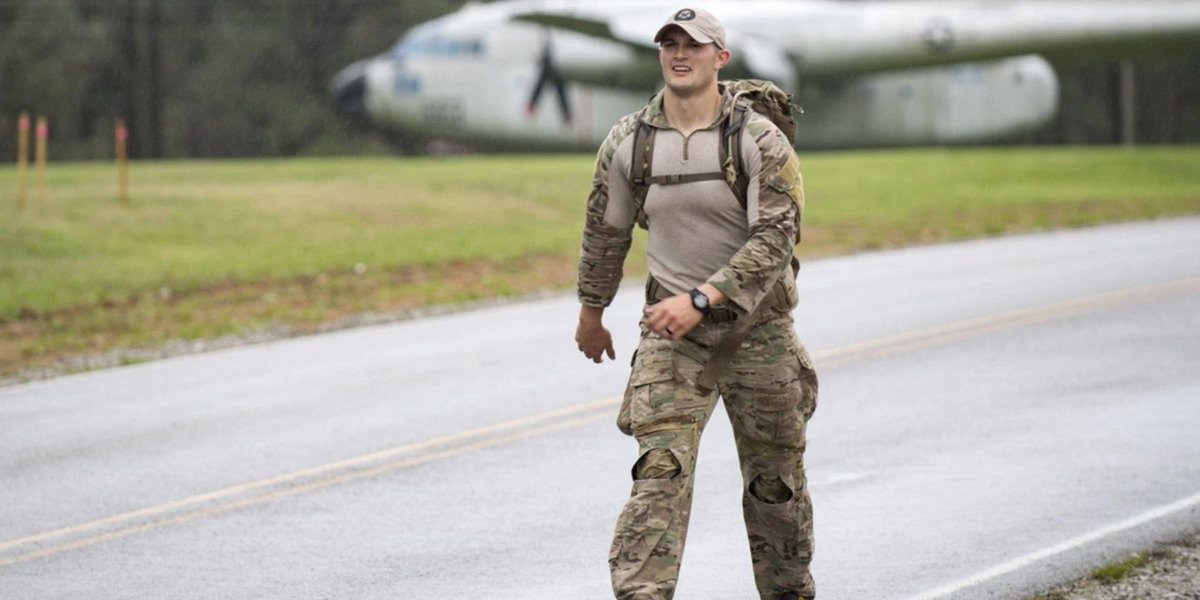TRAIN LIKE THE TROOPS: OUR GUIDE TO RUCKING
By Buddy Blouin

Advertisement
If you love hiking and pushing yourself to the next level, rucking might be right for you. Similarly, if you’re looking to join the U.S. military, the ruck march doesn’t have to be for you, but you’re going to face it regardless. Picture a hot summer day. Instead of just taking a hike, you’re also carrying a bag filled with plenty of weight on top of it all. To some, a rucking workout is simply taking things to the next level as a fun challenge, and to others, it can be a nightmare. Regardless of how you feel, ruck marches serve an important purpose in preparing troops for the battlefield.
Read next: Army Basic Training: Everything You Need to Know
What Is Rucking?
Rucking is a workout involving carrying weighted backpacks, also known as rucksacks, and then running/jogging/walking with them for a prescribed period of time or distance. It emulates military training and is a popular form of physical fitness in various branches of the military, most notably, the Army ruck march. But you don’t have to be enlisted to take part. There are several rucksacks available online, and enthusiasts can simply pack their bags and start their route. It’s popular within various subsets and a necessity for some, such as hikers. Rucking will typically be done with some sort of pace to push yourself. It’s generally an outdoor activity and can be a great way to build your strength, cardio endurance, and other physical/mental attributes. Many organizations also put on rucking events to raise awareness, raise funds, or pay tribute to the military community. It’s also known to be a popular team-building exercise in some cases.Building Stronger Soldiers
There are no two ways about it; a rucksacking workout is a good way to get the blood pumping. But the military uses ruck marching as more than a way of conditioning for the sake of conditioning. It’s preparing warriors for what they will face on the battlefield. Think about it for a second. You’re set to go on a mission or patrol. What does that look like in your mind? If you aren’t wearing multiple layers of clothing, strapped full of equipment, and have a potential bag attached to you and filled with gear, you may need to reimagine things. Anyone in the field can be subject to carrying a lot of stuff. It goes far beyond just weapons and ammo, although these add up well enough. There are tons of other pieces of gear, including bulletproof vests, navigational equipment, everyday essentials, MREs/water, a knife, and a light, that a mission might require. There are also times in which you may be required to carry things back, which can add to your load, including the literal human weight of another. Rucking prepares troops to face these mental and physical challenges head-on for a successful mission. If you’re looking to take up rucking for fitness or train to join the military, here are some of the benefits you can expect to receive:- Better cardiovascular endurance.
- Building strength in multiple muscle groups.
- Challenging your mental toughness.
Advertisement
7 Tips for Rucksacking
Completing a rucking exercise is just like any other workout. You’re going to want to start off small and work your way into things. It’s a progression and should be about the journey more than the destination. If you’re just getting started, we’ve got a few tips to help you along the way. Whether you're preparing for Basic Training or just looking for a new routine, apply these tips, and you’ll go farther than you ever thought you could:- Make sure your rucksack is right for your body type and the terrain you’ll face.
- Know how to pack. You’re going to want heavier items against your spine to help with balance.
- Make a list and stick to it. Compact what you can and pack things with purpose. Water is a must.
- Trekking poles can go a long way, especially for beginners.
- Plan your trip ahead of time, accounting for the environment you’ll face.
- You’ll want to have good support and traction, so make sure you have the right footwear.
- Have an emergency kit and plan just in case.
The appearance of U.S. Department of Defense (DoD) visual information does not imply or constitute DoD endorsement. Photo by Airman 1st Class Daniel Snider 23rd Wing Public Affairs
Written by
Buddy Blouin
Buddy Blouin is a Contributing Writer at VeteranLife.com
Buddy Blouin is a Contributing Writer at VeteranLife.com
Advertisement
SHARE:



